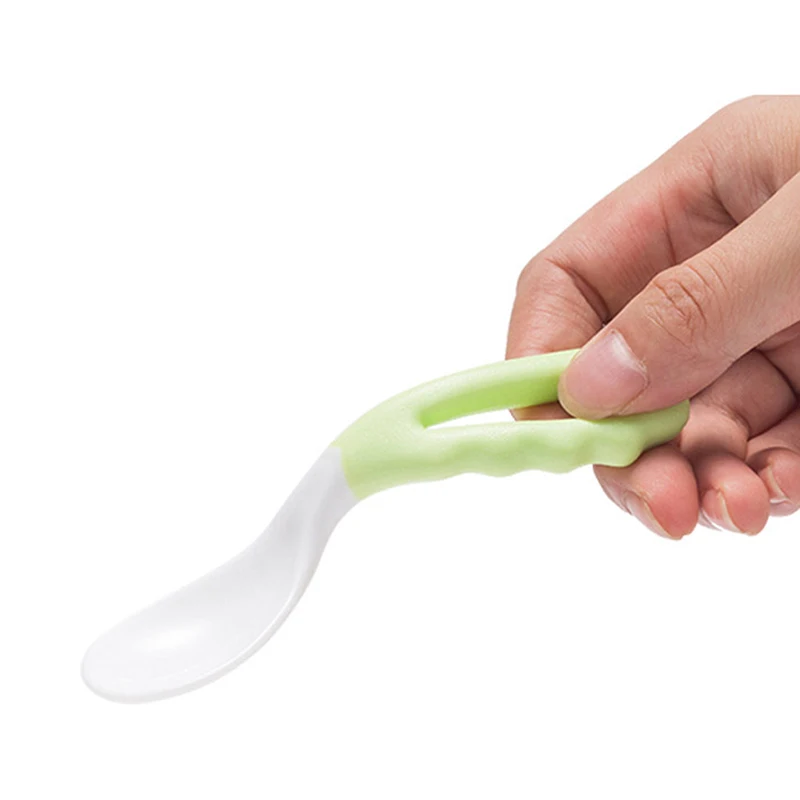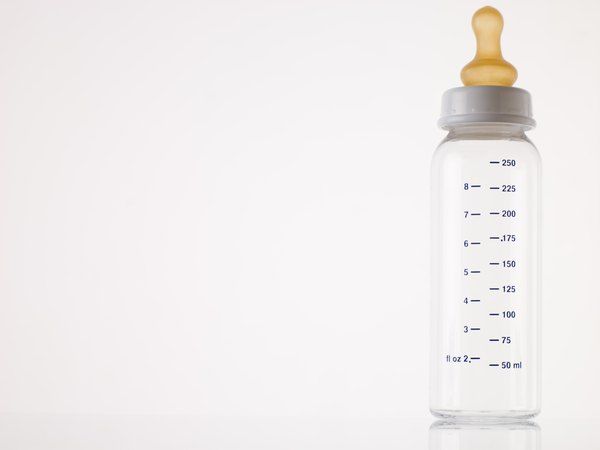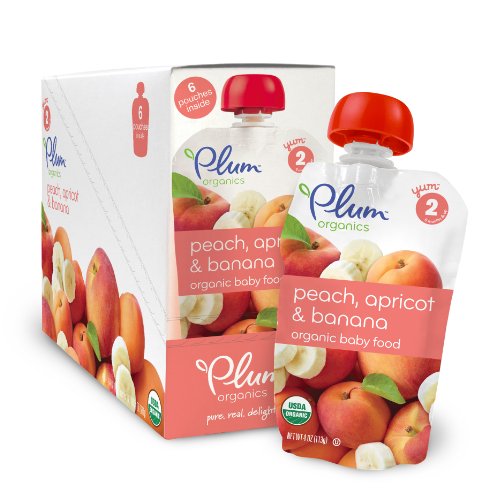Why wait to feed baby solids
Feeding your baby: When to start with solid foods
Up to 6 months old
From the first hour of life, through to 6 months old, your baby can receive all of the nutrition she needs to grow and develop from your milk. She doesn’t need anything else – no water, tea, juice, porridge or any other foods or fluids during this period.
Myth: Babies need solid food sooner than 6 months old
When you breastfeed your baby frequently, starting foods earlier than 6 months is not necessary and can even be harmful.
Introducing foods or fluids other than breastmilk to your baby before she is 6 months old can increase her risk of illnesses, such as diarrhoea, which can make her thin and weak, and even be life-threatening. Your baby may also breastfeed less often, so your supply of milk, her most vital food, may decrease.
A mother’s milk is the safest and healthiest food for the first 6 months of life for all children everywhere. It is a constant, safe source of essential nutrition, wherever you and your baby live in the world.
Feeding signs
If you see your baby with her hands near her mouth when she’s still younger than 6 months, you may think she’s not getting enough to eat from your milk alone. Actually your baby is showing normal feeding signs, they are just more developed now that she’s older. It doesn’t mean your baby needs solid food early. Your baby is ready when she is 6 months old.
Myth: Boys need more than breastmilk
Both baby girls and boys need the same amount of food to be healthy and grow strong and smart. Your milk alone will meet the nutrition needs of both a son or a daughter in these first months of life.
6 months and older
When your baby reaches 6 months, his rapid growth and development require more energy and nutrients than your milk alone can provide. He needs to start eating solid foods in addition to breastmilk to keep up with his growing needs.
When to feed your baby solid foods
Feed your baby whenever you see him give feeding signs. After washing hands with soap, start by giving your baby just two to three spoonfuls of soft food, such as porridge, mashed fruits or vegetables, twice a day. Continue to breastfeed as often as before.
After washing hands with soap, start by giving your baby just two to three spoonfuls of soft food, such as porridge, mashed fruits or vegetables, twice a day. Continue to breastfeed as often as before.
Non-breastfed babies
If you do not breastfeed your baby, the best time to introduce her to solid foods is also at 6 months of age. This is the age when all babies, breastfed or not, need to start getting solid foods to ensure they are getting all the nutrition their growing bodies need.
Living with HIV
If you are living with HIV, introduce your baby to his first solid foods at 6 months and continue to breastfeed him while taking your ARV medicines and following your treatment plan.
Don't wait too long to start solid food
Your baby’s body needs the extra energy and nutrients to help him to keep growing. Waiting too long may cause your baby to stop gaining weight at a healthy rate, and put him at risk of becoming thin and weak.
Why You Should Wait Until 6 Months
Recommendations for introducing solids have changed a lot, but there are so many benefits of waiting until 6 months. Read on to find out why.
Read on to find out why.
Recommendations for introducing solids have changed a lot in the last couple of decades. Women used to be pressured to feed rice cereal to their babies as early as a few weeks old for a better night’s sleep.
When I was a baby, moms were told to start solids between 6 weeks and 4 months old, depending on baby’s sleep pattern and if the baby was struggling with reflux or excessive spit up.
When I became a mom, I started introducing solids at 4 months, based on different recommendations. Recent research and the reactions of my kids makes me wish I had waited to introduce solids.
Both the World Health Organization (WHO) and the American Academy of Pediatrics (AAP) recommend exclusive breastfeeding until baby is 6 months old.
“Introducing babies to complementary foods too early can cause them to miss out on important nutrients that come from breast milk and infant formula.” explains Chloe M.
Barrera, MPH, Centers for Disease Control and Prevention
Today, despite these recommendations and studies that advise otherwise, over 54% of women surveyed introduce solids to their infants before 6 months. The survey showed that 16.3% of babies are given solids before 4 months and 38.3% between 4-5 months.
In another survey, parents cited these reasons for introducing solids before 6 months:
- 90% said they thought their baby was old enough to start eating solids
- 71% said their baby seemed hungry a lot of the time
- 55% said their doctor or health care professional recommended this
Why Wait Until 6 Months to Introduce Solids?
Babies are born with very immature digestive systems. While the GI tract is still maturing, infant’s systems are not equipped to digest anything but breast milk. If anything but breastmilk is introduced, even formula, it can permanently alter baby’s gut microbiota, causing problems like necrotizing enterocolitis, diarrheal disease, and allergies.
“In infants, the ring of muscle between the esophagus and the stomach—the lower esophageal sphincter (LES)—is not fully mature, allowing stomach contents to flow backward,” says Andrew E. Mulberg, M.D., a pediatrician and pediatric gastroenterologist. “In time, the LES will mature and open only when the baby swallows and will remain tightly closed the rest of the time, keeping stomach contents where they belong”
That said, some mamas simply don’t produce enough breast milk (and other moms may not want to breastfeed for various reasons). If breastfeeding doesn’t work for you, that’s ok. There are plenty of healthy formulas, and many babies thrive on formula. Consider adding probiotics to baby’s formula to help with immune and gut function.
But that’s just the beginning. Here, a host of other reasons to hold off on introducing solids until 6 months:
1. Long-term health
Holding off on all solids until 6 months of age can boost your child’s long-term health. Because infants who start eating food need less calories from breastmilk, they may lose out on some of the most important benefits of breastfeeding. These include lower risk of obesity, diabetes, respiratory and ear infections, as well as Sudden Infant Death Syndrome (SIDS). Breastfeeding also reduces the frequency of doctor visits, hospitalizations, and prescriptions, according to the CDC.
Because infants who start eating food need less calories from breastmilk, they may lose out on some of the most important benefits of breastfeeding. These include lower risk of obesity, diabetes, respiratory and ear infections, as well as Sudden Infant Death Syndrome (SIDS). Breastfeeding also reduces the frequency of doctor visits, hospitalizations, and prescriptions, according to the CDC.
2. Improved immune system
“One of the benefits of breastmilk is that each mother provides custom-designed milk to protect her infant,” according to Dr. Sears. “When a baby is exposed to a new germ, mother’s body manufactures antibodies to that germ.” One study suggests that these maternal antibodies in breast milk improve an infant’s intestinal immune system—an effect that continues to benefit baby well into adulthood.
3. Allergy Prevention
Breastfeeding exclusively for the first six months has been shown to significantly lessen the risk and severity of food allergies in families with a strong history of them. It also reduces the risk of skin sensitivities, like eczema.
It also reduces the risk of skin sensitivities, like eczema.
To further prevent allergies, studies suggest introducing allergenic foods as soon as baby is ready to try solids can reduce your child’s risk of developing food allergies by up to 80 percent. But since babies can’t exactly eat nuts or even peanut butter, I recommend trying a product called Ready, Set, Food!, which gives parents the option to add the most common allergenic foods (eggs, nuts, and milk) to breastmilk, formula, or puree in a safe and effective way.
4. Higher IQ
One study found that exclusive breastfeeding for 6 months or longer was associated with a higher IQ. At seven-year followups, the IQ of exclusively breastfed babies was an average of 3.8 points higher gain than those who were not exclusively breastfeed during this time period. Researchers think this is because maternal milk is rich in fatty acids and other bioactive components essential for brain development.
5. Mama’s Milk Supply
The best way to maintain your milk supply is to keep nursing—nursing is all about supply and demand. When you start introducing solids, baby needs less breast milk since he/she is getting calories elsewhere. But babies under 6 months of age get all of the calories and nutrients they need from breast milk, so there is no need to put your supply at risk by introducing solids.
When you start introducing solids, baby needs less breast milk since he/she is getting calories elsewhere. But babies under 6 months of age get all of the calories and nutrients they need from breast milk, so there is no need to put your supply at risk by introducing solids.
Get free updates on baby’s first year! – Free Updates on First Year [In-article]
Sign me up!
There Are Always Exceptions
Like just about anything with babies, there is no hard-and-fast rule when it comes to introducing solids. At the end of the day, every baby is different, and every baby develops at different speeds. Some babies are more advanced and may be ready for solid foods around 5-5.5 months; other babies may not be ready for solid foods until 7-8 months. And for other babies, your pediatrician may recommend starting solids if baby needs extra calories or nutrition.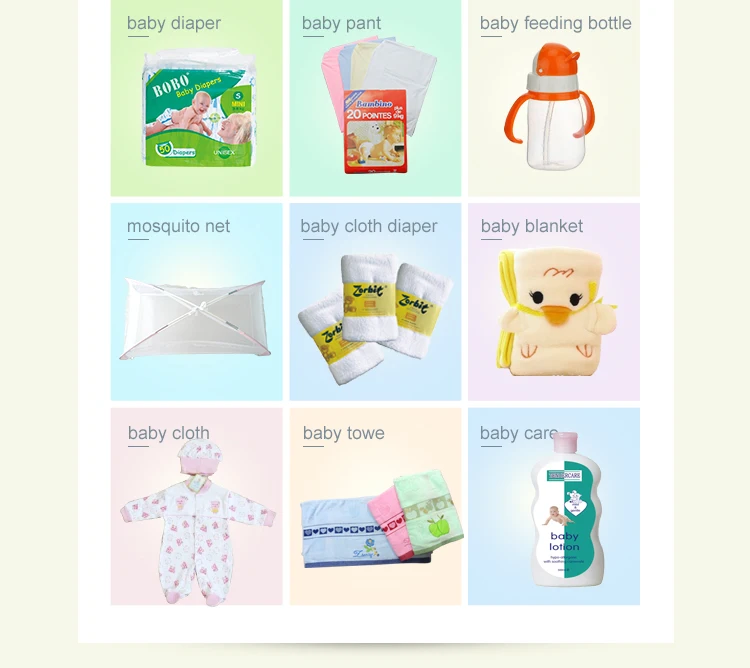 Don’t focus too much on the number if it seems like your baby is showing signs that he/she is ready a littler earlier or a little later. Always work with your doctor to best determine the right time to introduce solids to your baby.
Don’t focus too much on the number if it seems like your baby is showing signs that he/she is ready a littler earlier or a little later. Always work with your doctor to best determine the right time to introduce solids to your baby.
A Note About Introducing Solids
Waiting until after 6 months of age to introduce solids and water is important for optimal long-term health. After 6 months, watch your baby for signs of readiness. Baby should be able to support his/her head very well and sit up on his/her own. Baby may even start to show interest, by reaching for your food.
If baby reaches 6 months and doesn’t seem ready for solids, talk to your pediatrician about how to proceed. For most babies, iron stores begin to drop around this time—many babies will begin to need more nutrition than mom’s milk alone can provide. Waiting too long to introduce solids can also lead to delayed developmental skills, food texture sensitivities, and allergies.
Once baby is ready to start solids, go slowly. Just because you’re ready to start introducing solids doesn’t mean you can feed baby whatever you’re eating. Start with complementary foods and continue breastfeeding. Check out this article to explore the best iron-rich foods for baby.
The WHO recommends that, in addition to breast milk, baby eats
- solids 2-3 times a day between 6-8 months,
- 3-4 times a day between 9-11 months,
- 3-4 times a day with an additional snack 1-2 times a day between 12-24 months.
Ready to start introducing solids? I recommend trying baby led weaning. Once you start, watch for signs of discomfort, like indigestion, constipation, diarrhea, and increased spitting up. If baby shows signs of discomfort, he/she may not be ready just yet. Reduce the amount of food you’re introducing and consider adding probiotics to help with digestion. If that doesn’t work, take a little break and try again in a few days.
How About You?
When did you start feeding baby solids? How did you know your baby was ready?
Introducing Solid Food: Why, When, What and How
Introducing Solid Food: Why Babies Need It
As babies grow older, the need for solid food arises, from which the body will receive enough iron and other nutrients necessary for growth and development.
During the first six months, the baby's body uses the iron stored in the womb. Some iron also comes from breast milk and/or formula. But as the baby grows, the reserves of this substance in the body decrease. And the iron that a child receives from breast milk or formula is already not enough at the age of about six months.
Through the introduction of solid foods, the child also learns to eat, gets to know new tastes and textures of different foods. At the same time, he develops teeth and jaws, and he also acquires skills that will later be needed for language development.
Signs it's time to introduce solid foods
You will know when it's time to introduce solid foods by how your baby develops and behaves.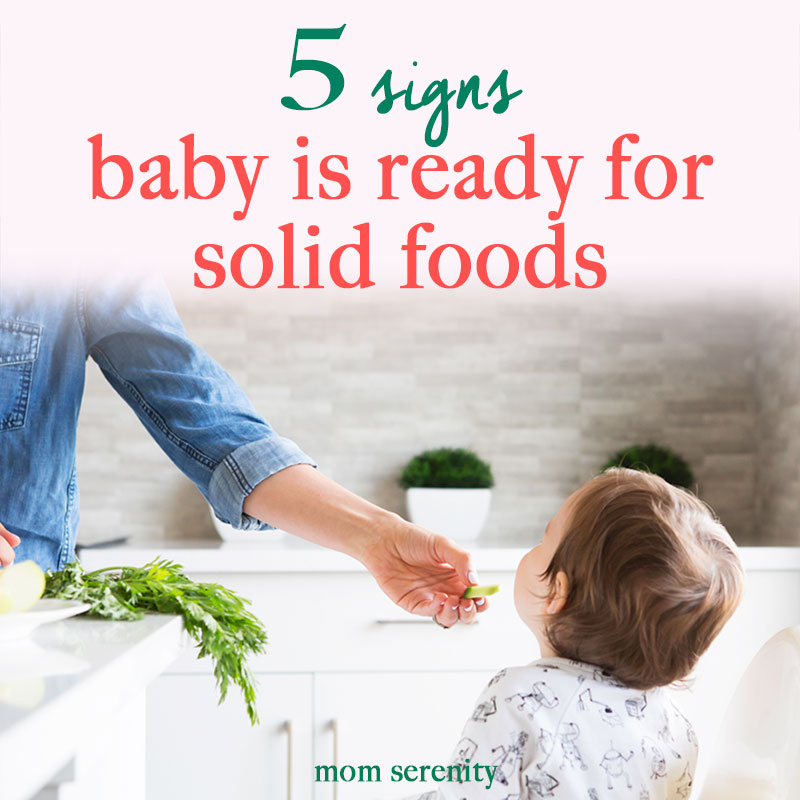
Your child is ready for solid food if:
- holds head and neck well and can sit upright with support
- shows interest in food - for example, looking at the contents of your plate
- reaching for your food
- opens his mouth when you offer him food from a spoon.
Most children show these signs by about six months, but in general everyone is individual.
It is not recommended to introduce solid foods before four months of age.
If your baby is about seven months old and hasn't started solid foods yet, you can talk to a nurse or pediatrician.
The best time to offer solid food to your baby is when you and he are in a good mood for the first time.
He is also more likely to try new foods after breast milk or formula. The fact is that when a child is really hungry, he only wants milk or formula, because he knows that he will be satisfied. At the same time, there will still be room for other food in his tummy.
Over time, you will learn to tell if your baby is hungry or full, wants to try something or is tired.
Your child is hungry, if:
- brightens up when he sees you cooking for him
- leans towards you while sitting in a highchair
- opens its mouth when you are about to feed it.
Your child no longer wants to eat if:
- turns away
- loses interest or gets distracted
- repels spoon
- purses his lips.
In what portions should the new food be introduced to the child? Start with 1-2 teaspoons and increase according to your baby's appetite. By 12 months, he should be eating about three small meals a day, plus breast milk or formula.
Consistency of solid food
The first solid food can be smooth, pureed or in soft pieces , depending on your baby's preference. Then the child can quickly move on to finely chopped, and then just to finely chopped foods.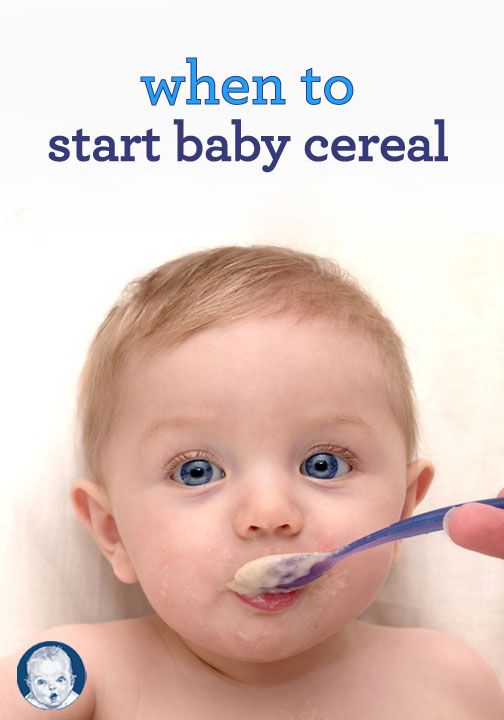
The child needs food of various consistencies. This will help him learn to chew, and chewing, in turn, contributes to the development of speech. It also encourages the child to learn to eat on his own and will prevent eating problems as he develops.
By 12 months, the baby should already be eating the same as the rest of the family. You may have to cut some foods into smaller pieces, and boil the vegetables well.
Do not leave the child unattended while eating, make sure that he does not choke. Be especially careful with foods such as nuts and small-boned meats, as they are easy to choke on. If the child can already move around, try to seat him while eating. If you sit next to each other while the baby is eating, he will most likely sit more quietly.
Types of foods when introducing solid foods
The child will be happy to try any new food, so there is no need to prepare something “special” for him.
You can introduce solid foods in any order, as long as you include iron-rich foods and cook foods of the right consistency.
Foods rich in iron include:
- iron-fortified baby cereals
- minced meat, poultry and fish
- tofu and legumes, cooked
- mashed or boiled eggs (do not give raw or soft-boiled eggs).
Iron-rich foods can be supplemented with other healthy foods:
- vegetables such as boiled potatoes, carrots or green vegetables such as broccoli
- fruit - e.g. banana, apple, melon or avocado
- cereals - e.g. oats, bread, rice and pasta
- Dairy products such as yogurt and full fat cheese.
These products can be combined as there is no need to administer only one product at a time. By offering your child a variety of foods, you will allow him to try a variety of new tastes and get a lot of nutrients.
With our solid food introduction tips, you can get your child interested in new foods and make the eating process smoother and playful.
Breast milk and formula when introducing solid food
Continue breastfeeding or formula until at least 12 months while introducing solid food.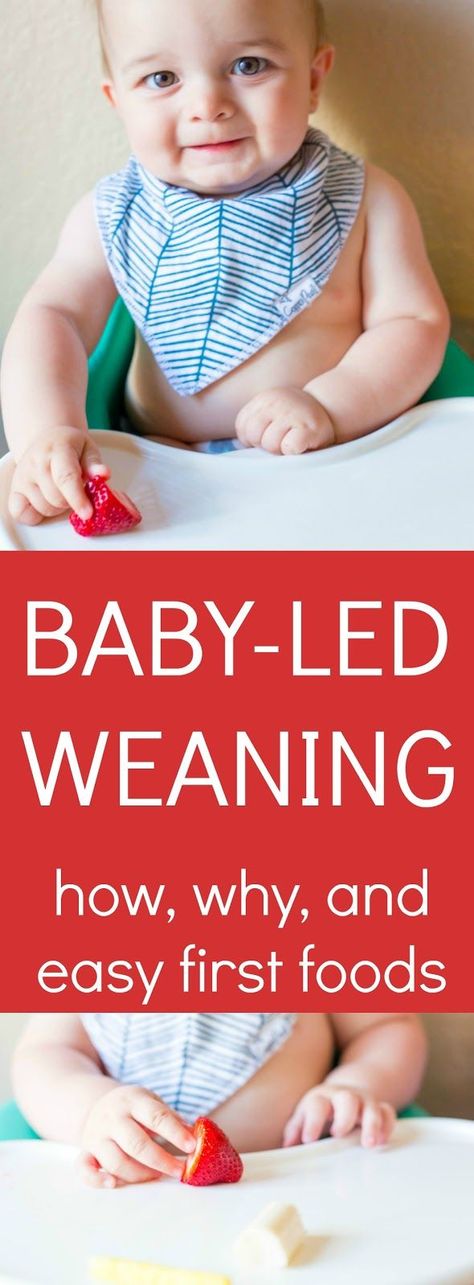
If you are unsure if your baby is getting the right amount of milk once solids are introduced, pay attention to his behavior.
For example, if a child has eaten a lot of solid food and is not getting enough or is not getting enough milk, the daily milk feeds may need to be made less frequent but longer. If the baby does not want to eat solid food, he may have had too much milk. This may be a signal that portions of milk should be reduced.
By about nine months of age, babies usually develop enough chewing and swallowing skills to eat solid foods before milk, not after.
Solid food does not replace breast milk or formula. If the transition to solid foods instead of milk and/or formula occurs too quickly, a child may miss an important milestone in their diet.
Water administration
At the age of six months, the child may be offered chilled boiled water in a cup during meals or at other times. This is to help your baby learn to drink from a cup, but at this age, he still doesn't need liquids other than breast milk or formula.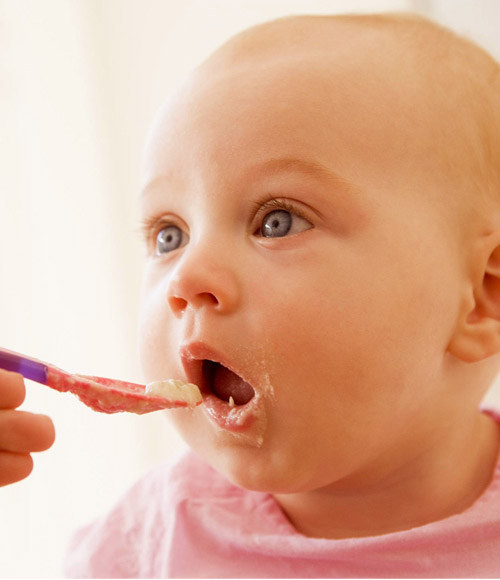 When the child is one year old, he can be offered fresh tap water without boiling.
When the child is one year old, he can be offered fresh tap water without boiling.
Foods and drinks to avoid
Some foods should not be given to children under a certain age:
- honey under 12 months to avoid the risk of infant botulism
- raw eggs, soft-boiled eggs, and products containing raw eggs, such as homemade mayonnaise, up to 12 months - bacteria in raw eggs may be harmful to infants
- skim milk products up to two years
- Whole nuts and similar hard foods up to three years - due to risk of choking.
Also, up to a certain age, children should not be given certain drinks :
- pasteurized whole cow's milk as a main drink up to 12 months
- soy, goat and sheep milk up to two years (fortified soy products may be given up to two years)
- rice, oatmeal, almond or coconut milk up to two years of age, unless advised otherwise by a pediatrician or nurse
- Unpasteurized milk of all kinds, tea, coffee or sugar-sweetened beverages for all ages
- fruit juice - should be limited at any age (fruits contain the nutrients a child needs).

Salt and sugar should not be added to baby food. Infants and young children are not suitable for highly processed foods and packaged foods that are high in fat, sugar and/or salt. These include cakes, cookies, chips and fried foods.
Food allergy and introduction of solid foods
Early introduction of allergenic foods may reduce risk development of food allergy in a child.
All children, including children at high risk of allergies, should try allergenic foods from about six months of age . These foods include hard-boiled eggs, peanut butter, wheat (in wheat bread, cereals, and pasta), and cow's milk (but not as a staple drink).
It is recommended to consult a physician, health visitor, nutritionist, pediatrician, allergist or immunologist if:
- the child already has a food allergy
- you have a family history of food allergies and are concerned about introducing solid foods to your child
- you are worried about his reaction to the products.

Children with severe eczema and children of parents with food allergies are more likely to develop food allergies. But most children with food allergies do not have food allergy parents.
Complementary foods - what is it and how is it eaten?
home
Articles
Food
Loginevskaya Yana Vladimirovna Pediatrician
24.04.2019
What is weaning and when should we start it? These and many other issues related to child nutrition torment young parents. In the era of the Internet and easy access to information, this information can sometimes become too much.
Let's understand what is complementary foods
Complementary foods is the introduction into the diet of a healthy child at a certain age of any food, home or industrial preparation, which supplements breast milk or food that imitates it, and contributes to the gradual transfer of the child to the general table. As a rule, complementary foods are thicker in consistency than the child's previous food. If the child has any health problems, the introduction of complementary foods may have its own characteristics.
As a rule, complementary foods are thicker in consistency than the child's previous food. If the child has any health problems, the introduction of complementary foods may have its own characteristics.
The purpose of complementary foods during the first year of life is to introduce the baby to foods other than breast milk/or formula. Timely teach to swallow and chew solid food. And also to avoid deficiency of energy and micronutrients, and vitamins.
In the literature and other sources, you can find such names as "pediatric" and "pedagogical" complementary foods?
Pediatric Complementary Food , as its name suggests, is a classic complementary feeding regimen recommended by the pediatrician at the appointment. Schemes in which there is a gradual replacement of breast milk / formula feeding with cereals, fruit / vegetable purees and other types of products.
Pedagogical complementary foods - "Pedagogical" means that first of all the child is taught - they are taught to eat, the correct behavior at the table, they teach that food is joy and pleasure, they show new tastes.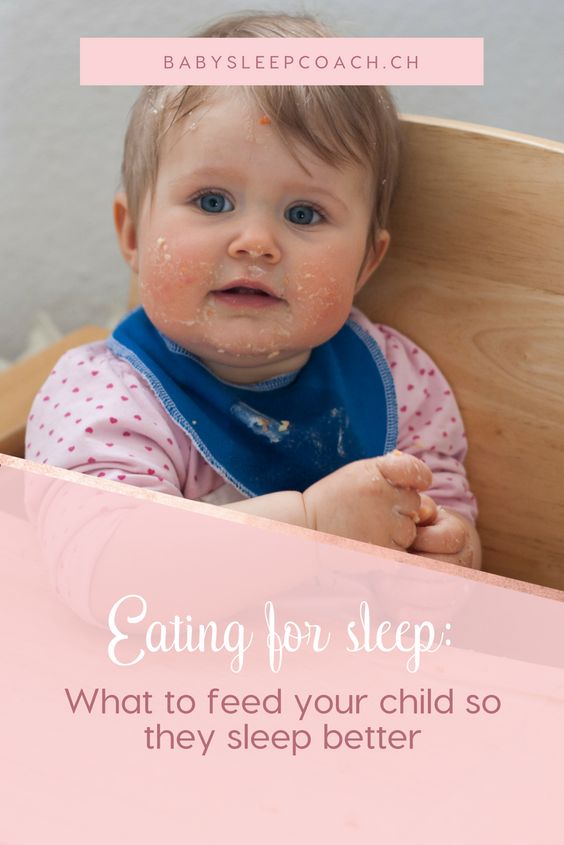 The essence of pedagogical complementary foods is that the child’s nutrition begins with “microdoses” (grains of food) that the child receives from his mother’s plate, nothing is puréed or blended, or even warmed up. Nutrition of the child - together with the family, how much he will eat, he will eat so much. Nothing is specially prepared, the family is invited to switch to a healthy diet. The disadvantage of this type of complementary foods is that the child, starting with “micro doses”, does not adequately increase the volume of complementary foods, which can lead to malnutrition of the child at an older age.
The essence of pedagogical complementary foods is that the child’s nutrition begins with “microdoses” (grains of food) that the child receives from his mother’s plate, nothing is puréed or blended, or even warmed up. Nutrition of the child - together with the family, how much he will eat, he will eat so much. Nothing is specially prepared, the family is invited to switch to a healthy diet. The disadvantage of this type of complementary foods is that the child, starting with “micro doses”, does not adequately increase the volume of complementary foods, which can lead to malnutrition of the child at an older age.
In my article, I will rely on modern research and recommendations primarily from the WHO (World Health Organization) and the National Program for Optimizing Feeding in Children in the First Year of Life in the Russian Federation.
What are the requirements for complementary foods:
- Complementary foods must be timely, introduced at the moment when the child's energy and nutrient requirements exceed what can be provided through breastfeeding (or formula).

- Complementary foods should be adequate, that is, with enough energy, protein and micronutrients to meet the nutritional needs of a growing child.
- Safe - Store or prepare hygienically and feed with clean hands using clean utensils - spoons, plates, not bottles or teats.
- Properly Administered - The child is fed appropriately for hunger cues and feeding frequency and feeding methods should be appropriate for the child's age.
When do we introduce complementary foods
The optimal age for the introduction of complementary foods is 6 months.
If the child is premature, then the timing of the introduction of complementary foods is delayed by as much as this child was born earlier (that is, if the child was born not at 40 weeks, but, for example, at 36, we have the right to postpone the introduction of complementary foods for 4 weeks, but if we see that at 6 months the child is already quite ready for the introduction of complementary foods, then you can start as early as 6 months). It is advisable to postpone the introduction of complementary foods for no more than 2 months. Try to start the introduction of complementary foods no later than 8 months of the child.
It is advisable to postpone the introduction of complementary foods for no more than 2 months. Try to start the introduction of complementary foods no later than 8 months of the child.
Up to 6 months, breastfeeding fully covers the energy needs of the child. Around 6 months of age, a baby's energy requirements increase dramatically, so it is necessary to add something to his diet in addition to liquid food. Breast milk in terms of its energy value contains 67-68 kcal / 100g, the mixture has approximately the same figures. Breast milk remains a valuable energy product for children not only in the first year of life, but also after a year. At the same time, it should be taken into account that the volume of the child's stomach by 6 months is about 200 ml, so the food introduced to the child must be thicker than formula or breast milk, otherwise we will still not be able to meet the energy needs of the body. The optimal calorie content of complementary foods should be at least 100 kcal / 100 g.
Liquid food and liquid quickly fill the stomach. To fill the energy deficit, it is necessary to introduce foods with a higher energy value than breast milk or formula.
WHO ways to increase calories:
-
cook with less liquid
-
Replace part of the water for cooking with breast milk or a mixture (it must be borne in mind that breast milk contains enzymes (lipase) - which begin the digestion and breakdown of food even before it enters the child's body, so instant cereals, when breast milk is added, immediately become liquid, but their energy value is not lost.
What do we focus on when introducing complementary foods:
The main criterion is the readiness of the child to introduce complementary foods - the child shows interest in food, the so-called food interest - he is interested in what his mother eats, actively reaches for food from his parents' plate, wants to taste it.
Indirect criteria
- Child's age about 6 months
- Decreased ejection reflex for solid food (active interest in food is never shown until ejection reflex fades)
- Doubling birth weight (optional item, some babies double their weight before 6 months of age)
- Child can sit with support
- Baby gets first teeth (again, not always)
Principles of maintaining interest in food
- Parents should remember that in order to form the main criterion for readiness for complementary foods, the child must see how his family eats.
 The formation of eating habits comes from the family and the immediate environment of the child. If, before 6 months, the child has never seen how mom or dad eats, how they eat at the table and what they eat, he may not have a food interest by 6 months. Food interest begins to gradually form as a skill of tracking the actions of an adult from 3 months of age. That is, somewhere from the age of 3 months the child, if you take him with you to the kitchen (dining room), the child begins to observe the process of eating, and gradually this interest - from the interest of "observation" goes to the "desire" to try just like mom or dad.
The formation of eating habits comes from the family and the immediate environment of the child. If, before 6 months, the child has never seen how mom or dad eats, how they eat at the table and what they eat, he may not have a food interest by 6 months. Food interest begins to gradually form as a skill of tracking the actions of an adult from 3 months of age. That is, somewhere from the age of 3 months the child, if you take him with you to the kitchen (dining room), the child begins to observe the process of eating, and gradually this interest - from the interest of "observation" goes to the "desire" to try just like mom or dad. - It is advisable not to feed the baby separately and try to eat with the baby what the baby eats. If you are feeding your child with industrial food (ready-made mashed potatoes in a jar), then try this food with your child. Try to bring the canned food as close as possible to the general view on the table - transfer the puree from the can to a plate, give a spoon.
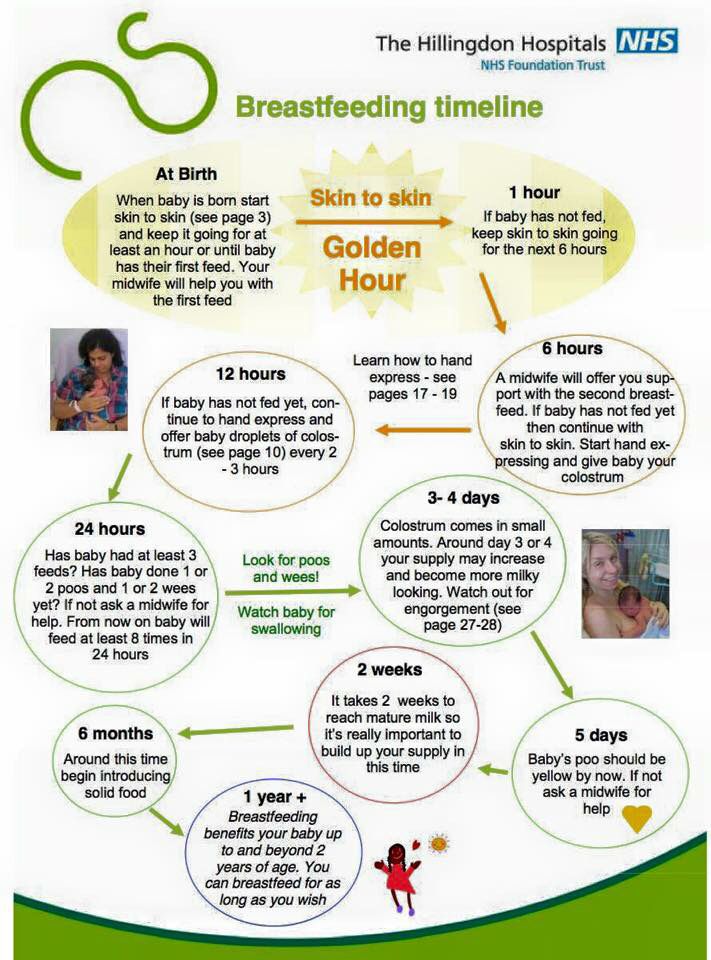 At the age of 8-10 months, the child learns to eat with his hands, so at this age it is advisable that the child has small pieces of food on the plate that he already eats - these can be pieces of boiled potatoes, broccoli, cauliflower, pieces of apple, banana. The pieces should be small, 1 x 1 cm, so that the child can grab them with his fingers. In parallel, the mother can supplement the child from the plate with the main food. The child learns to cope with more solid food, learns to chew, swallow. The sooner the skill of swallowing more solid food is worked out, the easier it is for parents in the future. At the age of 10-12 months, the child's fine motor skills are already improving, he is learning to eat with a spoon (be patient, different children do it in different ways and at different speeds)
At the age of 8-10 months, the child learns to eat with his hands, so at this age it is advisable that the child has small pieces of food on the plate that he already eats - these can be pieces of boiled potatoes, broccoli, cauliflower, pieces of apple, banana. The pieces should be small, 1 x 1 cm, so that the child can grab them with his fingers. In parallel, the mother can supplement the child from the plate with the main food. The child learns to cope with more solid food, learns to chew, swallow. The sooner the skill of swallowing more solid food is worked out, the easier it is for parents in the future. At the age of 10-12 months, the child's fine motor skills are already improving, he is learning to eat with a spoon (be patient, different children do it in different ways and at different speeds) - Be mindful of the child's physical condition - do not introduce new foods when the child is unwell or tired or teething or has undergone some medical procedure such as a vaccination
- Offer small portions.
 Some children undereat food because they are initially intimidated by the portion size. Do not insist that the child finishes the portion. Let it be better after some time to ask for another
Some children undereat food because they are initially intimidated by the portion size. Do not insist that the child finishes the portion. Let it be better after some time to ask for another - Try to keep the area around the child clean! This initially teaches the child to cleanliness at the table and to a neat diet. Some children are very sensitive to external stimuli - dirty hands, face, clothes can cause them severe discomfort
- Help the child if you see that the child is "interested" in food, but tired of fighting with it.
- No games, entertainment or persuasion while eating - in this way you replace food interest with interest in the game. The child will not be able to learn to adequately assess their desires in food. Don't turn food into a show.
Complementary feeding rules:
-
any new product is introduced only to a healthy child. A breastfed baby is given complementary foods up to the breast.

-
the introduction of new foods should not coincide with vaccinations, teething, vacations, or other stress for the child (when stressed, the child may refuse the proposed new product).
-
any new product is introduced in the morning (so parents have time to observe the child, look at his reaction, notice allergic manifestations) If the child has a reaction to a new product, then it is better to write it down, and try to introduce the product again after 5- 10 days. Because this reaction may not be related to the product, but caused by other factors. If the negative reaction is repeated, then the introduction of this product is postponed for 3 months.
-
it is advisable to introduce no more than one new product per day.
-
to get acquainted with the product, the child sometimes needs 10-15 sentences in order for him to start eating it. The reaction of the child in the form of wrinkling, pushing food, curvature of the face does not indicate that the child did not like the food, but only that the new taste is very bright for him and causes a large number of emotions.
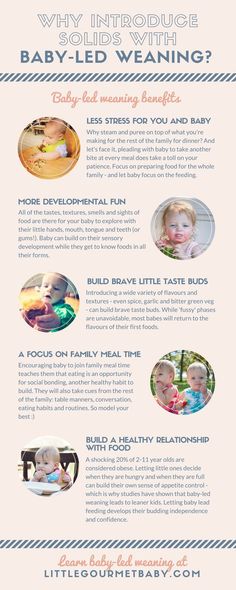 For children, even neutral tastes can seem very rich, due to the higher sensitivity of the receptors. Therefore, when introductory feeding, it is not recommended to use spices and salt in the preparation of food for the child.
For children, even neutral tastes can seem very rich, due to the higher sensitivity of the receptors. Therefore, when introductory feeding, it is not recommended to use spices and salt in the preparation of food for the child.
Basic complementary foods
For the first feeding, there are three main types of products: cereals, vegetables and meat.
-
Cereals - Dairy-free cereals are used to start complementary foods. Rice, corn, buckwheat are the first to be introduced - these can be special “instant” baby cereals (we carefully study the composition, make sure that there are no additives, sweeteners, flavor enhancers, vitamins), instant cereals are well suited to start complementary foods, at 6-7 months, in the future you can switch to ordinary "adult" cereals, you can grind ready-made buckwheat or rice with a blender or fork; instant porridges in the form of flakes are also good. Then the rest of the cereals (oatmeal, rye, millet) are introduced.
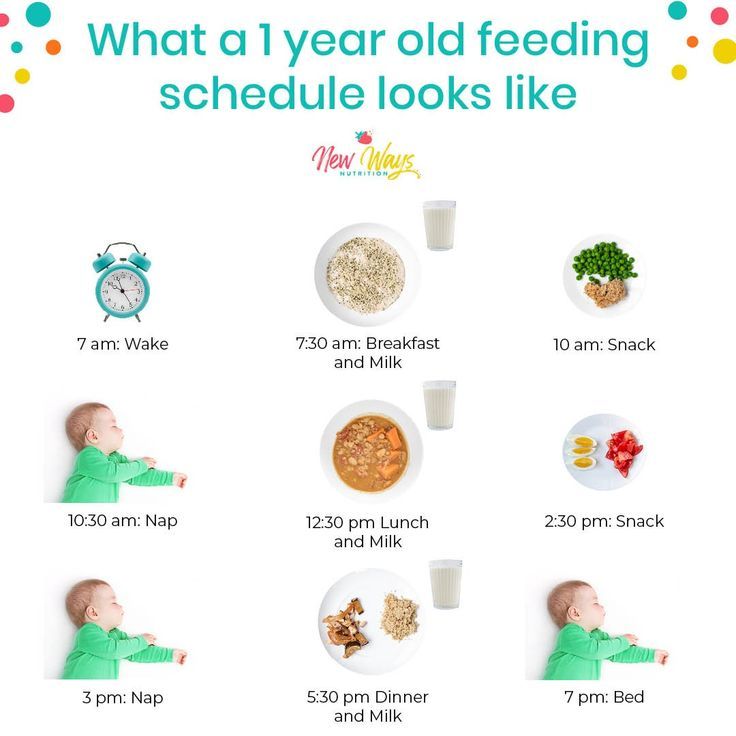 With an allergic burden in the family, the introduction of milk porridges earlier than 12 months is not recommended.
With an allergic burden in the family, the introduction of milk porridges earlier than 12 months is not recommended. -
Vegetables – first add green/white vegetables (zucchini, cucumber, broccoli, kohlrabi, cabbage and cauliflower), then legumes, colored vegetables (carrots, pumpkin, beets, tomato)
-
Meat - the beginning of complementary foods with the most easily digestible and hypoallergenic meats - rabbit, turkey, then veal, beef, pork, lamb. Children with an allergy to cow's milk protein start complementary foods first with pork, then they introduce beef. Children with allergies are also trying to limit the introduction of chicken into the diet, as it is a highly allergenic product. Lamb is introduced to children no earlier than 10 months. Poultry meat - duck, goose - contains refractory fats and is not recommended for introduction into the diet of babies under 3 years of age.
-
Fruit and dairy products are not considered essential complementary foods.
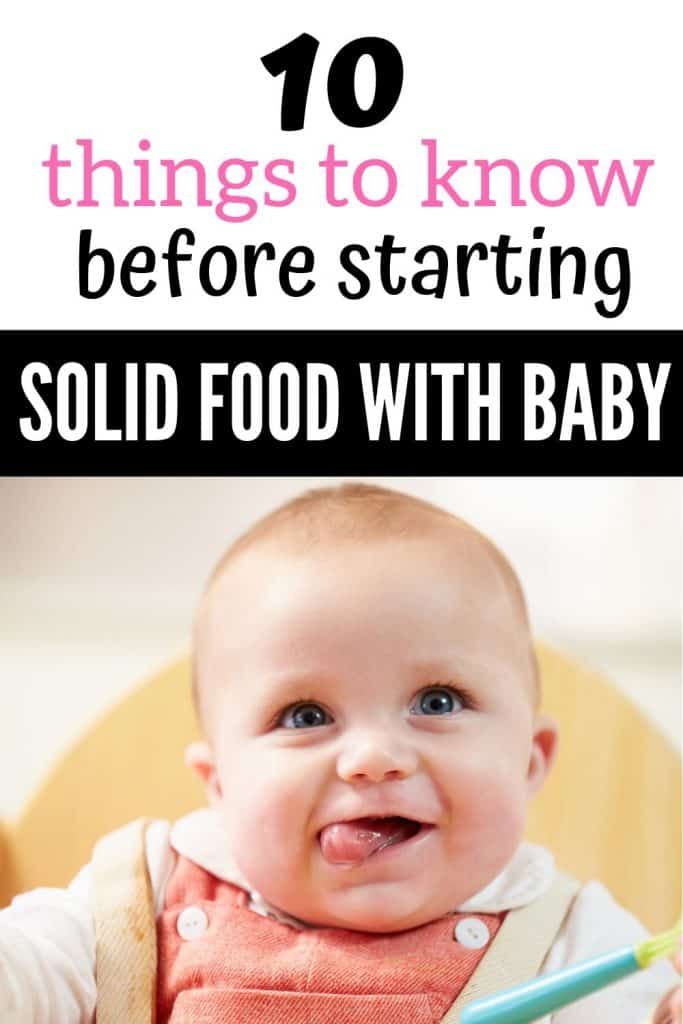 Can be given for table variety. If the mother wants to give fruits, berries and juices to the child, it is better to use them as a flavoring additive to the main complementary foods or even postpone the introduction to an older age. In children with an allergic tendency, it is recommended not to introduce dairy products up to a year. You have to be careful with berries and fruits. It is best to start complementary foods with seasonal fruits and berries; the least and least likely to cause allergies are currants, blueberries, apples, pears, plums. Allergic reactions often occur on strawberries, bananas, citrus fruits.
Can be given for table variety. If the mother wants to give fruits, berries and juices to the child, it is better to use them as a flavoring additive to the main complementary foods or even postpone the introduction to an older age. In children with an allergic tendency, it is recommended not to introduce dairy products up to a year. You have to be careful with berries and fruits. It is best to start complementary foods with seasonal fruits and berries; the least and least likely to cause allergies are currants, blueberries, apples, pears, plums. Allergic reactions often occur on strawberries, bananas, citrus fruits. -
Fish and seafood. Not a staple complementary food. But fish, like meat, is a source of protein, rich in polyunsaturated fatty acids, as well as minerals and vitamins. It is recommended to introduce fish no earlier than 9-10 months. Again, if the child is allergic, it is advisable to refrain from introducing fish products up to 1 year. We begin to introduce complementary foods with low-fat white varieties of fish in the form of mashed potatoes - ice fish, hake, cod, haddock, pollock, navaga, pike perch, sea bass, dorado.
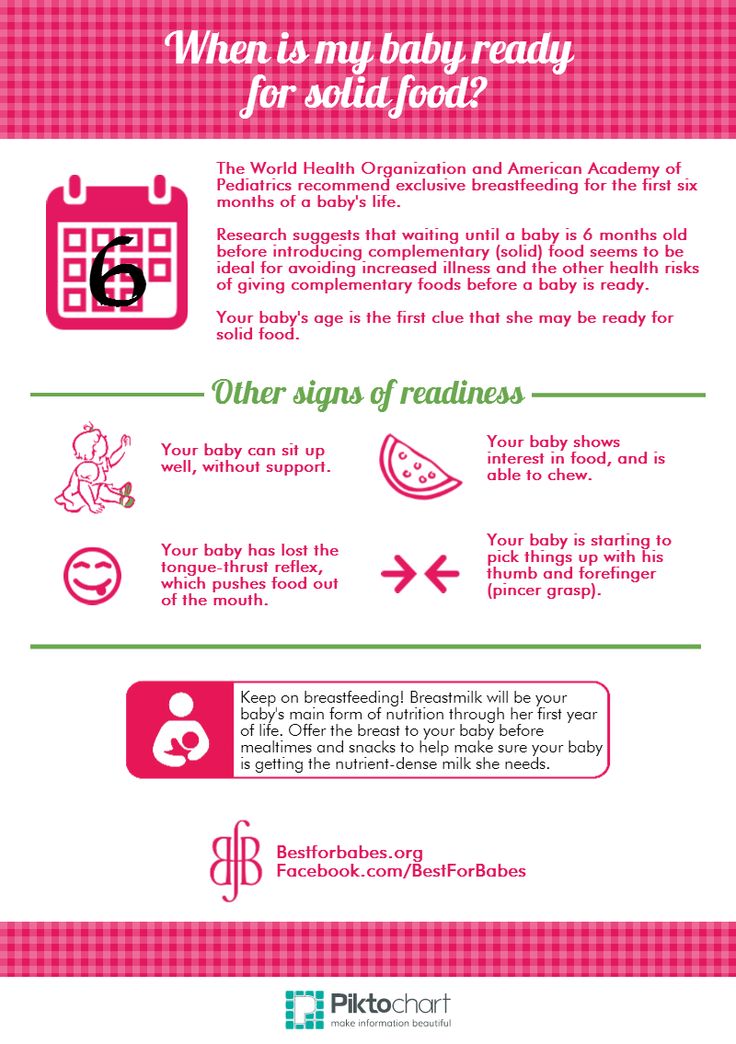
-
Egg . A product that is rich in many different micro and macro elements, vitamins. However, the egg has a very high allergenicity (included in the very big eight allergens). Considering that a quarter (5-6 g) or half (10-12 g) of the yolk, which are recommended to be administered, contains very few nutrients and energy, it is easier not to give this product than to risk allergic reactions in a child.
-
Whole nuts, peanuts Should not be present in a child's diet until at least three years of age. In a number of countries, communities, families, where, for example, peanuts are common as a staple food, they can be used as an additive to complementary foods in a pureed state. Nuts are included in the big eight allergens and are not recommended for introduction into complementary foods for children with allergies up to three years of age.
-
Water . After the introduction of complementary foods, children can begin to offer water as a drink.
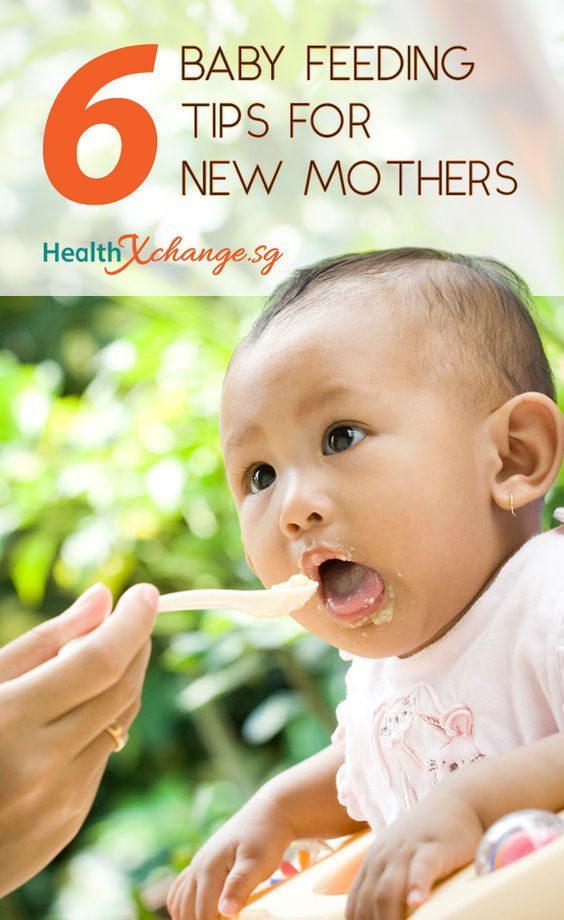 First as an introduction, later as an additional source of fluid, while reducing the volume of breast milk (mixture). It should be pure water without any additives. It is important to remember that breastfed babies may go without water for quite a long time, due to the fact that they receive enough liquid from breast milk.
First as an introduction, later as an additional source of fluid, while reducing the volume of breast milk (mixture). It should be pure water without any additives. It is important to remember that breastfed babies may go without water for quite a long time, due to the fact that they receive enough liquid from breast milk. -
Tea . The World Health Organization does not recommend including tea in the diet of children under 2 years of age. Why? First of all, because of the tannins that are present in tea and can help reduce the absorption of trace elements, including iron and cause anemia. Tea also contains caffeine (it is found in a state associated with tannins and is more often called theine), which can cause excessive stimulating effect on the fragile nervous system of the child., It can also lead to increased heart rate, increased peristalsis of the stomach, increased body temperature - all this can adversely affect the general condition of the child.







